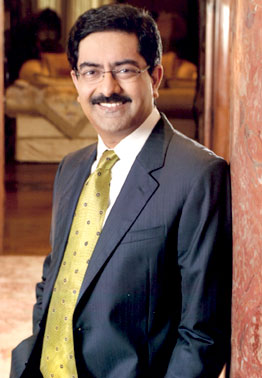India in 2050: Marching to its own destiny
02 August, 2016 | Business India
ShareA liberal environment and sound governance are essential to India's prosperity, says Mr. Kumar Mangalam Birla, Chairman, Aditya Birla Group
 Making prognostication about what will be the state of the world 35 years into the future is hazardous. I am reminded of the words of Thomas Watson, president, IBM, who said, in 1943, that: "I think there is a world market for maybe five computers."
Making prognostication about what will be the state of the world 35 years into the future is hazardous. I am reminded of the words of Thomas Watson, president, IBM, who said, in 1943, that: "I think there is a world market for maybe five computers."
There are some trends about which one can make forecasts with certitude. For instance, demographic projections are stable. The world's population in 2050 will be 9.7 billion, of which 1.7 billion will reside in India. Similarly, by 2050, the centre of gravity of the global economy will have decisively shifted from the West to the Asia-Pacific region. The latter's share of global GDP would have risen from 35 per cent now to 55 per cent. Also, the global megatrends that will propel the course of the next few decades will be urbanisation, climate change, resource scarcity, ageing societies, digital economy, and of course, socioeconomic changes.
Certain structural features of the economy ensure that India will remain one of the three largest economies in the world in PPP terms. These are demography (the workforce remaining youthful, and expanding faster), high savings rate (much of the needed growth capital coming from domestic sources) and a stable sociopolitical system (the strengthening of India's democracy will continue).
These three factors are impervious to periodic changes caused by business cycles and, hence, the core growth rate of the economy will be among the highest in the world. It is also aided by policy action, economic reforms and building of hard and soft infrastructure (skills and human capital, health and nutrition).
I believe that India will move towards a higher degree of federalism and that states will compete with each other for investments and jobs. I also foresee India becoming a continental-size single market, with smooth movement of goods, such as agricultural produce, within the country.
By 2050, India's global influence would have increased and it will hold leadership positions in global multilateral institutions. With a stronger economy, large foreign direct investments inflows, a liberal exchange rate regime and a sophisticated financial sector, India will have become a major regional hub, for manufacturing, financial services and other service industries.
One of the consequences of the megatrend of urbanisation would be increased demand for physical infrastructure, urban services, mass transit, waste treatment, quality education and affordable housing. This would be a major growth driver aiding job creation in the cities.
— Mr. Kumar Mangalam Birla, Chairman, Aditya Birla Group
The megatrend of climate change would call for a shift to more sustainability oriented paradigms, in manufacturing as well as agriculture. Expect a much higher share of renewable energy, investments in solving water shortage problems, 'more crop per d;rop' practices in agriculture, less energy-intensive GDP and a greater share of the digital (read resource saving) economy. The green economy will also serve as an engine of large-scale job creation. India will probably move from food self-sufficiency to food security, ensuring this through international linkages.
I anticipate the business landscape will become increasingly turbulent. There will be constant churn and even sudden seismic shifts in different industries, as a result of technological advances in areas such as materials, computing and genomics. A significant share of manufacturing activity might shift from pure scale to smaller production runs, with a high degree of product customisation. Online marketing will totally transform the traditional retailing and distribution infrastructure.
The sharing concept, as exemplified by platform aggregators like Uber and Airbnb, will gain ground. So, there will be a d;rop in preference for ownership of some assets. For society as a whole, this will mean more efficiencies as the 'idle' time of assets is reduced. We have seen this concept gain ground in transportation and hospitality and who knows, which other areas it will invade.
Finally I would like to emphasise that India's growth and development ambitions require massive investments in human capital - education, skills and training. This has to be largely achieved through public resources. We need a total transformation of the education sector, across every area - primary schooling, vocational education, online learning, high quality apprentice programmes and higher education in science, technology and medicine.
India's economy has quadrupled in the past 16 years. Sustaining this needs renewal and investment in the most important resource - its workforce. A liberal economic environment, buttressed by sound governance, is another ingredient that will be essential. I believe India's march to more prosperity, stability and peace is a march to its own destiny.






